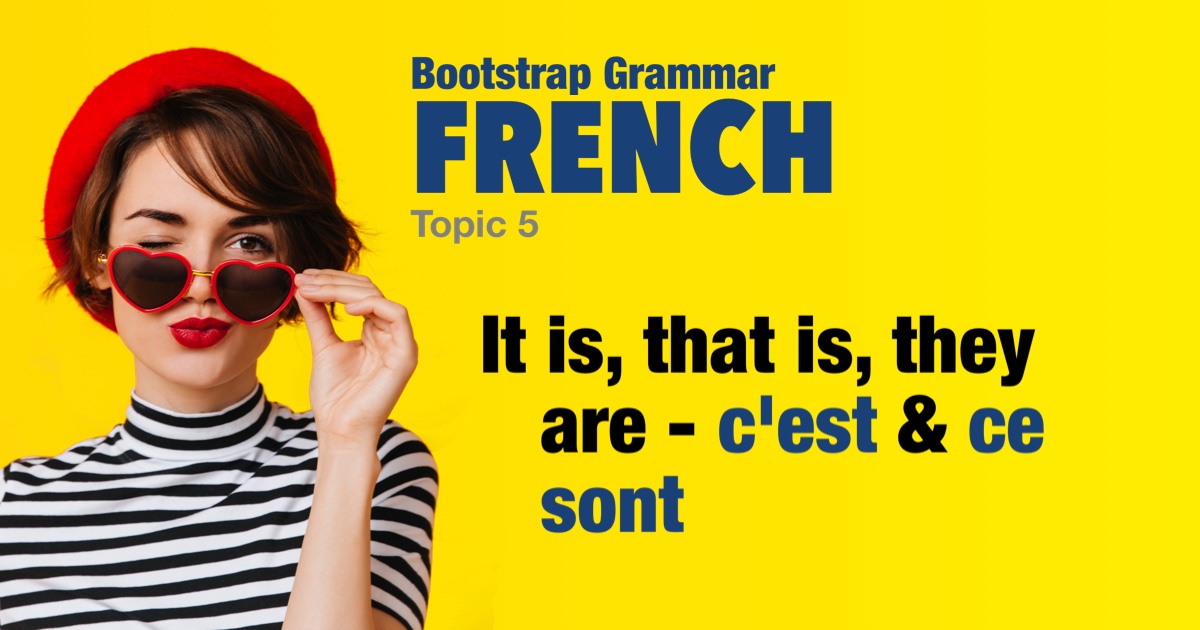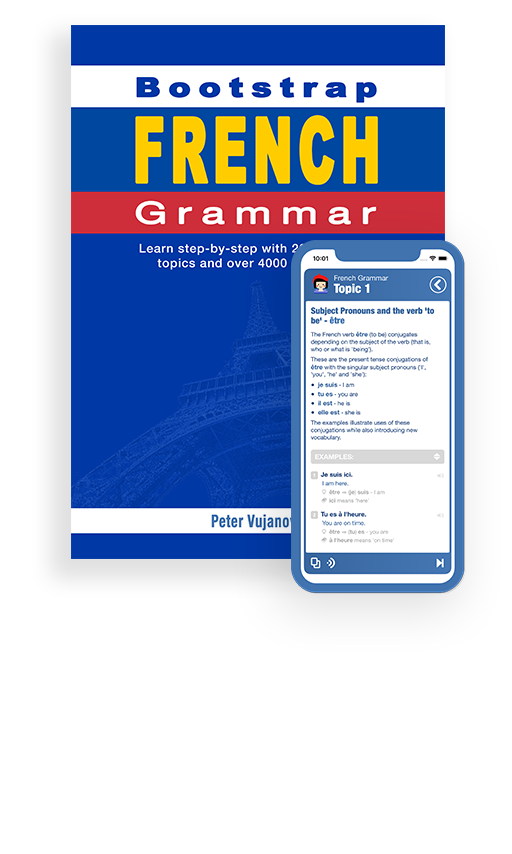French grammar - It is, that is, they are - c'est and ce sont |
|||
|
|||
The word ce means 'that' or 'it'. It can refer to anything - animals, objects or concepts. And can be both singular and plural. -- In short, ce is a very general, very useful and very common word in French. There is no exact English equivalent. Combined with the verb être ('to be') we have the very common phrase c'est - 'it is' or 'that is'. • The est is the il or elle conjugation of the verb être ('to be'). • And we have the contraction ce+est ⇒ c'est. -- In French, when we have a word ending in a vowel and another starting with a vowel side-by-side, to avoid having two vowel sounds together, we often drop the first vowel and replace it with an apostrophe and join the words together. So ce+est ⇒ c'est. The plural form of c'est is ce sont ('these are' or those are') which uses the ils or elles conjugation of être. -- However, you will commonly hear people say c'est even in situations where the plural ce sont should be used. The inverted question form of c'est is est-ce ?. -- And while the plural question form sont-ce ? is grammatically correct, it is never used. |
| Examples: | |
|
C'est loin d'ici.
It is far from here.
|
|
|
Non, c'est près d'ici.
No, it is close by.
|
|
|
C'est qui ?
It is who? *OR* Who is it?
|
|
|
Qui est-ce ?
Who is it?
|
|
|
C'est Juliette.
It is Juliette. |
|
|
Est-ce Jacques ?
Is it (that) Jacques? |
|
|
Oui, c'est Jacques.
Yes, it's Jacques.
|
|
|
Où est-ce ?
Where is it? |
|
|
C'est là-bas.
It is over there. |
|
|
C'est ici.
It is here. |
|
|
C'est magnifique !
It is magnificent!
|
|
|
Ce sont Jacques et Juliette.
They are Jacques and Juliette.
|
|
|
Ce sont monsieur et madame Dupont.
This is Mr and Mrs Dupont.
|
|
 |
|




